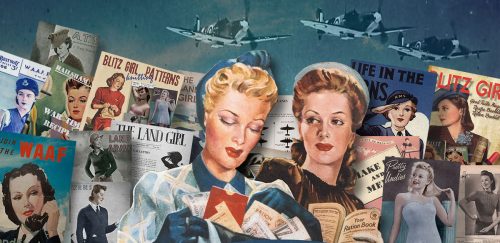World War Two Fashion
The Impact of War on 1940’s Fashion in the USA – style and silhouette changes through the 1940’s
© 21/10/2012 Tia Craig- 
Click World War Two Influence on 1940s Fashion to read the full article from the beginning or to download the free ebook.
4. 1940’s Silhouette and Style Changes
The spring of 1942 was when the War Production Board and the Civilian Production Administration issued a series of rules for the garment industry that were identified by a number preceded by the letter L, for Limitation Order. Women were able to adjust to it by utilizing fewer amounts of fabric and different colored dyes. The reduction in fabric amount changed the overall silhouette so that clothing would become more practical as women needed more versatility with their wardrobe.
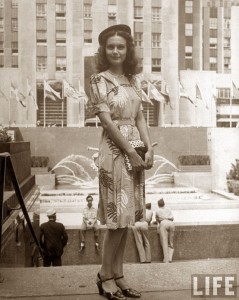
There were very strict guidelines on the fashion such as “a woman’s skirt could be no wider than 198 cm around. Sleeves could measure no more than 36 cm around. Belts had to be less than 5cm wide. Ruffles, pleats, and extra pockets were banned. For women, trim, knee-length skirts replaced long gowns.” (Lindop). Further more, “A reduction in the number of fashion colors, especially for wool, was required to conserve chemicals needed for wartime use.” (Walford).As a result, dyes were so scarce that blacks, browns, and white replaced the brightly colored attire. However, “The Textile Color Association of the United States released a palette for fall of 1942 that included a number of shades with patriotic names such as ‘Victory Gold’, ‘Gallant Blue’, and ‘Patriot Green’.” (Walford).
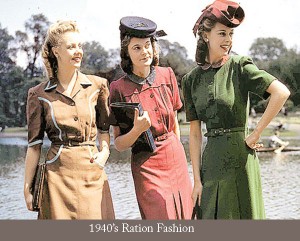
These restrictions caused new styles to emerge such as the military look which “included short jackets, narrow skirts, wide shoulders, pantsuits, low-heeled shoes, berets, and peaked caps.” (Lindop). This style was primarily worn by women who served in the war as nurses and other military services. Another style that appeared was called utility clothing which was the more standard look for women. It included “squared shoulders, narrow hips, and skirts that ended just below the knee. Tailored suits were the dominant form of utility fashion.” (The University of Vermont). For the women working in the factories, there was a dress code for them but that will be explained in further detail later on.
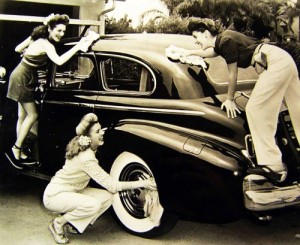
An additional note to add to the style change was that pants became more popular during this time. Many still wore skirts or dresses but pants had become an article of clothing that had a sense of practicality.
copyright Tia Craig
Next Chapter – 5.1940s clothing rationing and the black market
See also the lavishly illustrated concise history of 1940s womens clothing and style.
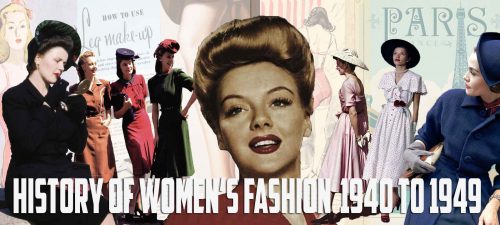
Download direct to your device – 1940s Wartime Women Memorabilia
